Advantages and disadvantages
This group of primroses has its advantages and disadvantages. The following parameters are distinguished as advantages.
- High decorative properties consist in increased terry. The diameter of multi-petal roses is about 5 cm, the caps of flowers are from 10 to 15 cm. In general, the plant is quite compact, even, with lush foliage of a dark green hue. By the way, even after flowering, the leaves look attractive, especially in the Primula Auricula.
- The flowering period is in April, May and early June. On average, the duration is about 2-3 months. Some varieties of the cultivar are capable of blooming twice a season, for example, in September or October. In this case, it all depends on the care and maintenance.
- The garden plant shows good results in the garden or adjacent areas, as well as indoors - on the windowsill. So, experienced flower growers claim that after the autumn transshipment into the container, the flowering of the culture occurs in mid-February - early March.
- Perfect for forcing from seeds in early spring - flowering is observed already in the first growing season.
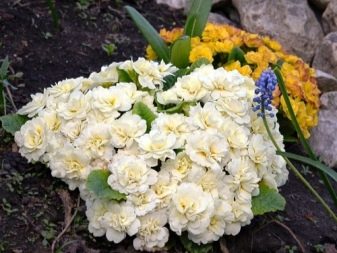
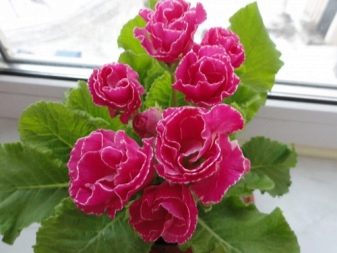
Unfortunately, terry primrose also has disadvantages.
Without proper care, it is impossible to achieve bright blooming buds in the garden or at home.
It is important to use exclusively fertile soil and water regularly.
Average winter hardiness - the plant copes in temperatures of -23-25 degrees. These figures are quite low for the spring type of primroses.
Experienced gardeners recommend providing shelter to plantings for the wintering period or moving them into containers.
From the point of view of botany, terry primroses are perennials, however, they are more likely to be called "juveniles". Bushes are very demanding for transplantation, rejuvenation and other similar procedures to maintain full growth and health. For example, the Primlet F1 hybrid was bred as a biennial.
The group of terry varieties is not capable of producing seeds. For this reason, reproduction is possible only in a vegetative way.
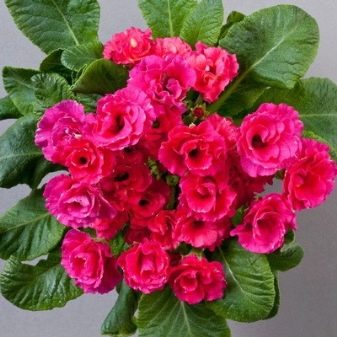
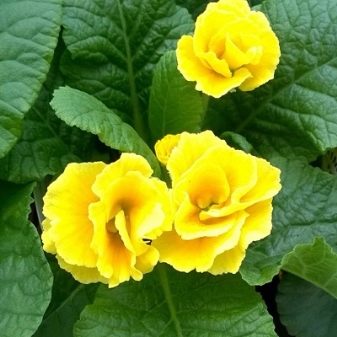
Description of the planting process
- The container is filled with a light (necessarily wet) substrate of peat mixture and vermiculite. Next, seeds are sown, sprayed with water, covered with a film. Such a "blank" is sent to the balcony, refrigerator or basement for stratification; its duration ranges from 5 days to a week.
- Over time, the container is exposed to light for the first shoots to appear. This process can take a whole month. The optimum temperature range is from 12 to 18 degrees.
- Gardeners do not recommend removing the film, as the seedlings must get used to open space, light, dry air. Do not forget to monitor the substrate - it must be wet, pouring is contraindicated.
- After the appearance of 2-3 leaves, the seedlings are transplanted into a separate dish, you can use plastic cups or pots.
- As soon as there is a steady warmth, the seedlings can be planted in a permanent place. Someone prefers to postpone the procedure until next spring - by this time the plant will be fully formed.


Terry flowers agrotechnics
Terry primroses in key aspects of cultivation require the same agricultural techniques as other garden primroses. Namely:
- prefer partial shade;
- love light, well-fertilized soil;
- do not tolerate drought;
- need regular division of the bush, transplant is easy;
- a taboo for a plant is waterlogging combined with cold.
Most of the varietal primroses grown in our country easily overwinter, do not need special shelter.True, adding a nutritious substrate to the rhizome and a layer of fallen leaves will not hurt.
Features of growing from seeds
Using the example of Roseanne terry primrose, consider how to organize the cultivation of a flower from seeds.
In the middle lane, the preferred method of sowing is not in open ground, but for seedlings. You need to start sowing primrose no later than February, since the plant requires stratification, takes a long time to sprout, and grows slowly. The step-by-step instructions are as follows.
- In a container with a light moist substrate (peat mixture + vermiculite), without deepening, seeds are sown, sprinkled with water, covered with polyethylene and sent to a place with a cold, but positive temperature (refrigerator, balcony, basement). The time of stratification is from 10 days to 3-4 weeks.
- Further, the container is placed in the light, kept at a temperature of 12, but not more than 18⁰C, and wait for the emergence of seedlings. This process can take 25-30 days.
- The film is not removed immediately, the seedlings are accustomed to open space and drier air gradually. The substrate is kept moist, but not poured.
- As soon as 2-3 true leaves appear, the seedlings are dived into separate cups (pots).
- They are planted in a permanent place after the onset of stable heat. Some gardeners recommend doing this only in the spring of next year, when a full-fledged plant is formed.
Care technology
Terry primrose is responsive to care. First of all, on the fertility of the substrate and watering. This determines not only the size of the corolla and the duration of flowering, but also the shade. On rich soils, the color is deep, saturated, on poor soils, faded.
The first time the plant is fed in early spring, preferably with a solution of organic fertilizer. This top dressing can be skipped if the bushes have been sprinkled with humus in the fall. Secondary fertilization by the end of summer. Complete mineral fertilizer is suitable for flowers, for example, Fertik, Kemir.
The maximum watering is given in May - June. During the dormant period (July - August), they make sure that the earth does not dry out, but do not water it abundantly. Regular moisture is resumed when the plant begins to grow again - from the end of August.
Every 3-4 years, and more often for some terry varieties, the bush is divided and transplanted. When planting, make sure that the foliage of neighboring plants is closed and does not leave open space.
Varietal primroses are recommended to be sprinkled with dry nutrient mixture for the winter, covered with foliage.
Tips for choosing and sowing primrose seeds:
Ideal home for primrose
If a blooming primrose has appeared in your home, you should know that bright flowers will delight the eye for a long time only if placed in a cool room. This means that the temperature should not exceed 12 ° C. In a living room, it is difficult to ensure that the air creates comfort at the same time for the primrose of people. Therefore, we advise you to put the flower pot on the window, away from heating appliances.
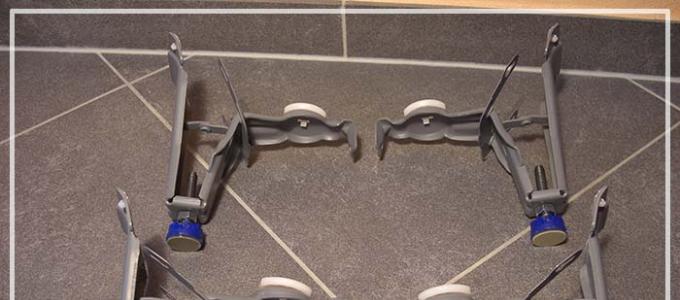
In autumn and spring (after the end of flowering), it is better to keep indoor primrose at a temperature of 12 to 20 ° C. If you have a plot of land, plant the plant in a shady spot. It should not be burned by direct sunlight. For the winter, primrose is usually brought back into the room to enjoy the beautiful bloom. But if you wish, you can leave it on the street - it will calmly survive the frosts (except for the northern regions).

Indoor primrose - suitable soil and air moisture
Features of watering home primrose at different periods:
On the eve and during the flowering period, the plant should be watered in such a way that the ground is always moist, but not swampy. After flowering, the soil in which the primrose grows is watered occasionally, waiting for the top layer to dry.
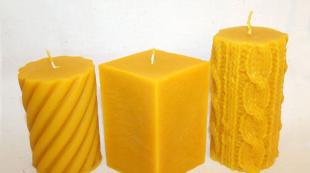
Indoor primrose effectively absorbs moisture from the surrounding air, which contributes to the juiciness of leaves and the beauty of flowers. But what if the air in the room is too dry? There is a great way to give the primrose the moisture it needs - spraying.The frequency of the procedure depends entirely on the degree of dryness of the air.
An important condition is to prevent drops from falling on delicate flowers.

Soil composition and fertilizer for indoor primrose
In the store, you are unlikely to find special soil for primrose. Do not despair, any substrate for flowers will do, for example, for growing geraniums. If you want to prepare the composition yourself, take a garden or sod land and add river sand to it - two or three times less. You can make a composition with the addition of peat, then it is better to take all three components equally. Do not forget to disinfect the prepared substrate to facilitate further flower care.

You should not feed the primrose between flowering, otherwise it will use up all its strength to build up powerful leaves and give out a meager flowering. When the buds appear, you can water the primrose with a weak fertilizer solution containing a complex of essential substances for flowers.

Breeding methods for indoor primrose
After contemplating the splendor of room primrose, many flower lovers have a desire to acquire a few more of the same bushes with cute bouquets. You don't have to go to a retail outlet for this. Primrose can be easily propagated at home in two ways.
1. Seeds
... Having purchased a suitable seed, flower growers sow it in boxes from early to mid-summer. You should not bury the seeds deeply. Covering the container with glass or polyethylene promotes the rapid emergence of seedlings. 2. By dividing the bush.
The lateral processes of primrose are separated after the end of flowering in spring when transplanted into open ground or a new flowerpot. The formation of roots occurs after planting the shoots in the sand, followed by covering with glass or polyethylene. Ready-made sockets with well-developed roots are seated in separate containers.

Rules for successful forcing primrose in the house
Forcing stages:
Select either two-year-old seedlings that have taken root lateral shoots of 2-3-year-old plants. On the eve of frost, the material for distillation is dug up and, together with the root ball, is planted in pots. Before flowering, they are kept at a temperature of 4-8 ° C, there is no need for watering all this time.
Gradually begin watering the plants and provide the care described above. After flowering, care consists in providing moderate watering and maintaining a cool air. With the onset of warmth, the flower is moved to open conditions. After 2-3 years, you can take lateral processes from them for distillation.

Isn't the room primrose charming? Home care and the photos discussed in the article are vivid evidence that this plant is worthy to appear in every home. The limited flowering period will be a bright and unforgettable stretch of the past winter.
flowering primrose
... It is appreciated for its long flowering and variety of colors.
Currently bred varieties with double, two- and even three-color flowers
.
Description of the species
Viala primrose (or orchid) is a perennial plant belonging to the genus Primroses of the Primroses family. In natural conditions, the flower can be found in the north of the African continent, the Middle East in Europe, and also in Central Asia. The natural habitat of the species is evergreen forests, rocky meadows of mountainous terrain, up to 4 thousand m above sea level. In culture, the plant is used for landscaping the garden, as well as planting in flower beds.
Did you know? On the territory of Ancient Russia, primrose was considered a traditional cult plant. It was used for all kinds of rituals, and was also associated with vigor and good health among the Slavs.
It is a small herbaceous flower, up to 20 cm high. Its basis is a basal rosette, from which several lanceolate leaves of a rich green color extend.The length of each leaf can be up to 30 cm, while the width is no more than 5–7 cm. At the edge of the leaf blade there are small teeth, the front and back sides of the leaf are covered with small whitish hairs. The plant's rhizome is not branched, it is located in the upper horizons of the substrate.
The main advantage of the species is the graceful and unique bell-shaped flowers. They differ in the correct shape, as well as five regular petals. Each petal has a rich color, characterized by lavender-lilac tones, while the buds have a bright red hue. The diameter of an open flower is 1.3–1.5 cm.
Individual flowers are collected in characteristic spike-shaped inflorescences with a pyramidal structure. They are located on elongated peduncles, 15–20 cm high. At the same time, the flower arrow reaches a height of about 18 cm and is distinguished by a light mealy bloom. The plant can bloom throughout June-July. After that, the primrose forms a small fruit-box with numerous small seeds.
Step-by-step process of sowing primrose seeds for seedlings at home
Before sowing, read the instructions on the package. It usually indicates how to sow primrose seeds:
- The prepared soil is spilled abundantly with water so that excess liquid glass through the drainage punctures.
- The seed is poured onto a thin napkin. Fold it in half and scatter it over the ground.
- The seeds are moistened with a spray bottle with the addition of fungicidal agents: Vitaros or Maxim. The preparations rid the plant of mold spores.
- Cover crops with cellophane or glass.
How to plant primrose in peat tablets? They are not disinfected. Place the seeds in a shallow container of water. The tablets will get wet, increase in size and be ready for inoculation.
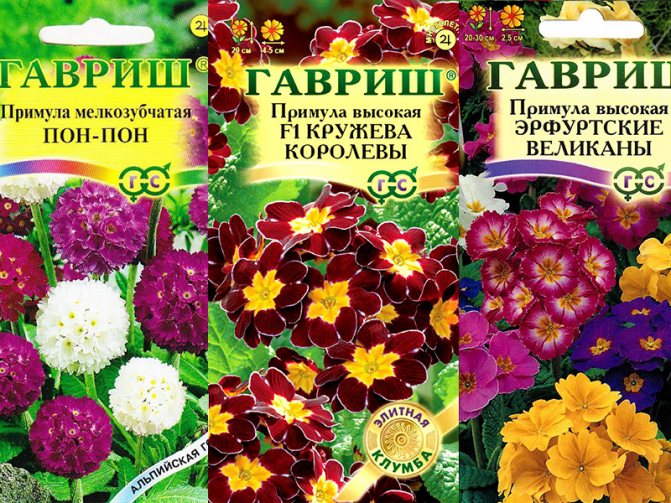
A primrose plant whose seeds are too small
Note! Regardless of whether it is necessary to stratify or not, the planting pattern is preserved for all varieties of primroses.
What is the advantage of terry hybrids
Gardeners consider such lush flowers to be the pinnacle of selection. Still would! Look at the "great-grandmother" of modern double flowers, a wild primrose of a constant lemon shade:
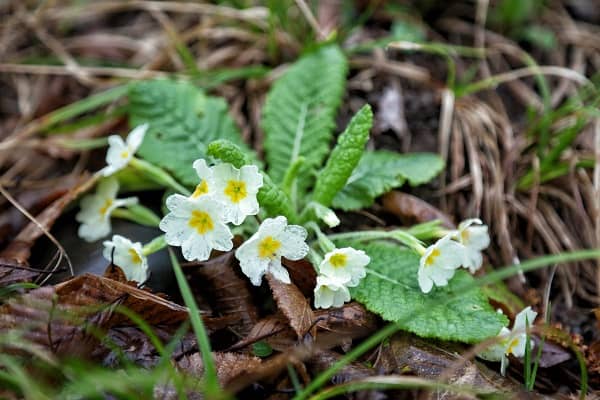
And now - to the riot of colors that we can grow in gardens and on window sills:
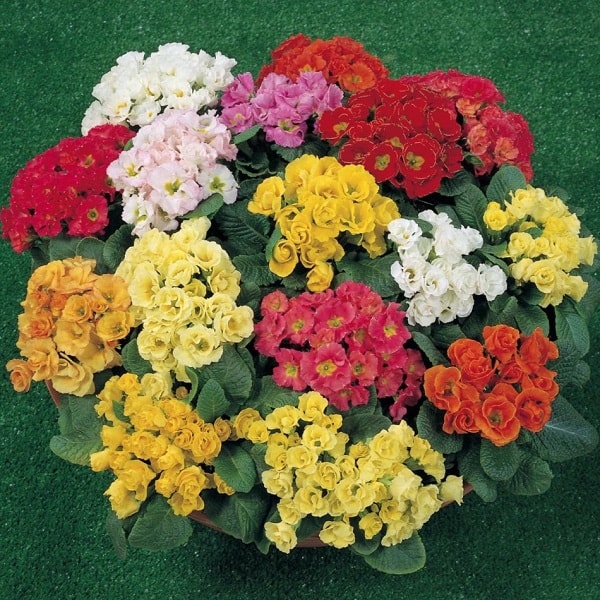
Terry can be three types of primroses: polyanthus (multi-flowered), auricula (ear) and stemless.
Roseanne is considered a beautiful addition to this noble family (she belongs to the common primroses that look like wild ones, and only this variety stands out in its native form).
The advantages of these colors:
- Maximum decorative effect. The bushes have beautiful leaves, making the plant look attractive even without flowers. The flowers themselves bloom thickly, in a bunch. The diameter of the cap is up to 15 cm, the diameter of the flower itself is up to 5 cm.
- Bushes bloom for a long time, 2-3 months (from April to June). Some plants can release petals again, in September-October.
- Flowers can also grow indoors. They can be purposefully grown in a pot or transplanted there at the end of autumn from a flower bed. In the latter case, the plant will thank you with flowers that will bloom from February to March.
Do they have any disadvantages
- This is not the case when a flower is planted and forgotten. Terry primrose must be constantly watered and fed, otherwise forget about bright bouquets.
- In winter, this primrose can withstand a maximum of -25 degrees. For insurance, it is better to cover a flowerbed with a film. Better yet, in the fall, transplant the primrose into a container and rearrange it to a warmer place.
- Most varieties of these primroses are labeled as perennials. But in fact, many of them are biennials. For the plant to live longer, the bushes need to be rejuvenated and repotted frequently.
- Terry primroses flowers do not give seeds, even if there are many insects in the flowerbed.Therefore, for reproduction, you either need to buy seeds all the time in stores, or use vegetative methods (say, dividing a bush).
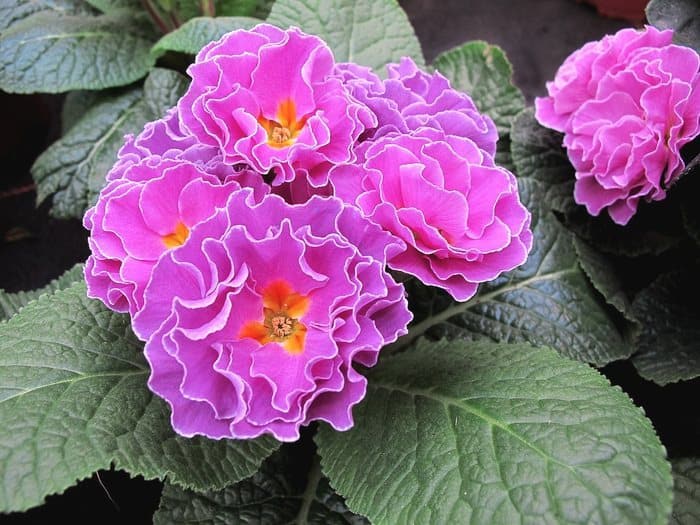
The best varieties of these flowers
Primroses are popular flowers, but not every variety will take root in the conditions of our strip.
Here I want to talk about the most successful, and not just varieties, but variety series (in which flowers with the same name can have different petal colors).
All of them are hybrids, that is, they are marked F1.
- Rosanna. Perennial, loves partial shade and nutritious, moist soil. May have white, yellow, orange, pink and red flowers. The bushes with white and yellow bouquets are considered the most persistent and "non-freezing".
- Will take it. Stemless primrose, a hybrid native to America. Biennial - this bush needs to be updated all the time. Blooms in the year of disembarkation.
- Paloma. And this flower can live in one place for up to 7 years. Blooms up to 50 days, but only in the second year of life. Seeds can be planted both in early spring and before winter. In our stores, in bags with Paloma seeds, mixes of different shades are offered.
- Rosie. Early flowering variety. It is good to grow it both in a flowerbed and on a balcony or windowsill.
Auricula (ear) Crimson Glow, Suzanne, Max, Xaver, Jupp are also considered successful varieties.
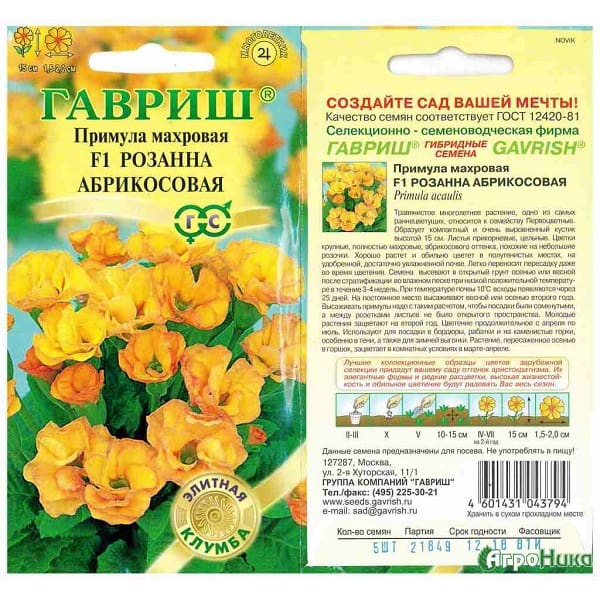
How and when is the plant planted?
In most cases, primrose is planted with seedlings. This is done in the second year of the seedling's life in the spring or autumn. Plants are transplanted once every 4 years, as the bush grows. In this case, the rhizome is divided.
In open ground
Primrose seedlings are planted in open ground, depending on the size of an adult plant, at a distance of 15-20 centimeters from each other.
When choosing a place, they are guided by the preferences of a particular variety. Slightly shaded areas or flower beds on the east side of the house are well suited. This will protect the primrose from direct sunlight and prolong its flowering.
Sowing at home
Planting primrose seeds at home is simple and affordable for both a professional and a beginner.
First, decide on a variety. Here the choice is truly huge. Experts identify 23 sections of primroses, each of which contains many species and varieties. Primrose seeds can be purchased at specialty stores, or harvested by yourself.
Their germination is high, but you should remember about controlling the shelf life of the seed. The older the seeds, the lower their quality.
Preparing primrose seeds for planting includes:
- stratification;
- soak;
- dressing (in the event that the seeds were collected on their own).
Stratification is required for most varieties of primrose, except for fine-toothed and common primrose. It is carried out in several ways: in the refrigerator or sowing seeds in the snow. When using frost stratification, the seeds are placed in a freezer for at least 12 hours, or a container with soil and sown seeds is already placed there. The method of stratification by low positive temperatures is also used. It is easier to use, but often less effective.
When soaking primrose seeds, it is important that the seeds do not absorb a lot of moisture, but simply swell and wake up. The procedure can be carried out by placing the seeds on the surface of a damp foam sponge or cloth.
Then put everything in a plastic bag, leaving it in the refrigerator for a week at a temperature of + 2 ... + 5 ° С. To protect against diseases, experts recommend soaking with the addition of fungicides or using a solution of potassium permanganate.
If stratification is carried out, primrose seeds are sown on dry soil superficially, without filling the seeds from above.
At the same time, it is important to observe the sowing density - there should not be more than 5 seeds per 1 square centimeter .. When sowing primroses that do not need freezing, sowing is done on moist soil
Then the containers are placed in conditions favorable for seed germination.
When sowing primroses that do not need freezing, sowing is done on moist soil. Then the containers are placed in conditions favorable for seed germination.
It is recommended to cover the container with the sown seeds with glass or a plastic bag and put it in a room with sufficiently bright but diffused light and a temperature of 16-18 ° C. Seedlings appear in two to three weeks.
The more time has passed from the moment of ripening and collection of seeds to planting, the longer you will have to wait for the first shoots. The glass is regularly removed and airing is carried out, gradually accustoming the seedlings to environmental conditions. After two weeks, the seedlings will be sufficiently strong and the glass or film can be removed.
Primrose seedlings grow and develop very slowly. The first pick is made at the stage of 1-2 true leaves. Seedlings are planted in separate cells or in a common container at a distance of 5 centimeters from each other
During this period, special attention is paid to watering. The soil should be slightly damp
Dry soil will lead to the death of the plant. But there should be no stagnation of water either. It will be enough to spray from a spray bottle, trying to avoid getting on the leaves.
The second pick is not necessary, it is carried out if the plants are already cramped in their containers, and the weather conditions on the street do not yet allow them to be planted in open ground. In this case, the distance between the cut plants should be about 15 centimeters, or the seedlings are transplanted into separate larger containers. During the pick, they try to disturb the root system of plants as little as possible.
Planting primrose seedlings in the ground is carried out in the second year of plant development.
Primrose seedlings can be planted in flower beds or used for growing at home on windowsills or balconies.
From the video you will learn how to sow primroses. Seed stratification:
Reproduction of carnation by seeds
Potted carnations are propagated only by sowing seeds. This approach allows you to maintain the original shape and color of flowers. The seeds are lowered into the substrate, poured into the container, to a depth of 2-3 cm. The emergence of seedlings should be expected no earlier than in 10 days.
A good time to plant clove seeds is from mid-March to mid-April. This period, by the way, coincides with the planting of flowers for seedlings. But for sowing in open ground it is too early - only the end of May is suitable for a thermophilic plant. After the plant has completely faded, you can immediately plant the collected or purchased seeds in its place.
Growing carnations at home from seeds
Collecting seeds at home
Home-grown carnation seeds can be easily purchased at a specialist retailer. But if you want to collect the seeds yourself, we will tell you how to do it correctly.
So, for this you need to leave one or two flowers. When they start to fade, you need to carefully wrap them with a piece of nylon or gauze. As soon as they bloom, the seeds will immediately crumble. That's why you need to wrap them around. You can store the harvested seeds for 2 to 3 years.
Preparing for planting in a pot
Before planting carnation seeds, it is important to take care of two nuances: • a suitable substrate; • the correct pot. Substrate
For growing carnations in a pot no need to create some kind of intricate soil composition. For normal development and high-quality flowering, it will be enough to buy a package of soil with the inscription "universal" or "floral". If the desire to create a soil mixture with your own hands is stronger than you, then collect land from the garden, the same amount of peat and humus. Add more sand, but half as much
Substrate. To grow a carnation in a pot, you don't need to create some kind of intricate soil composition. For normal development and high-quality flowering, it will be enough to buy a package of soil with the inscription "universal" or "floral".If the desire to create a soil mixture with your own hands is stronger than you, then collect land from the garden, the same amount of peat and humus. Add more sand, but half as much.
Important reminder! If you are preparing the substrate yourself, do not forget to disinfect it. What can be done for this? A few days before sowing, pour boiling water or a solution of potassium permanganate over the soil
Alternatively, you can warm it up in the oven.
You need to take shallow pots for homemade cloves
Containers for planting flowers can be very different in shape and volume. It all depends on your preferences and their location. The only recommendation is not to choose pots that are more than 6 cm high, as the soil moisture in such flowerpots is difficult to control. Check for drain holes. If not, do it yourself. It is also advisable to disinfect the pots with potassium permanganate or boiling water.
Home care for potted carnations
Light. Chinese, garden and hybrid carnations are very demanding on light. They should be illuminated by the sun for about 5 hours. There is only one caveat - it is better to slightly cover the plants from the summer midday rays. Turkish carnations are not so demanding on lighting, so they can even be placed on that window or balcony, where only a small amount of sunlight falls. The rest of the plant varieties in such conditions will develop poorly and bloom poorly.
Temperature. Growing temperature is important for carnations, although it does not play a decisive role. Ideally, the temperature should be 12-15 ° C.
Watering. Cloves are not too demanding for watering
It is important to avoid critical soil conditions: complete drying out and stagnant water. Another way to get moisture that cloves love is by spraying
Better to spend it at the end of a hot day.
Top dressing. When the plant is one month old, it is advisable to feed it every 10 days. To do this, you need to purchase a special branch fertilizer, dilute it in water or milk and spray the soil in a pot.
Growing carnations from seeds at home is an easy way to decorate your home. If you have not yet decided on this, we tell you: "It's time!" Our life is too monotonous and monotonous not to take advantage of such a wonderful opportunity to bring an abundance of bright colors into it. Be sure you will not regret the effort spent if you follow the simple recommendations that you have read!
Self-collection of primrose seeds and their selection for sowing
Primrose seeds ripen in fruit pods. They are very small, spherical or cylindrical, with a dark color, up to 2 thousand seeds "fit" in 1 g. But such fertility does not at all mean that you can get a huge number of plants. Seed propagation is very difficult and requires patience and endurance.
But it is better to hurry with sowing primrose: the seeds, even before spring sowing, when stored under ideal conditions, lose their germination by 40%. But the most important thing is that the time it takes for them to germinate increases dramatically within a few weeks after collecting the seeds. Therefore, it is best to use primrose seeds immediately after harvesting and lightly drying (or even without it at all).
The seeds ripen in July and August, they are harvested when the capsules are slightly open, but not yet fully opened (to prevent spillage and avoid the need to constantly monitor the capsules, it is better to tie the capsules with a transparent cloth). It is only necessary to keep the seeds cool, the temperature even at 20 degrees Celsius is considered very high for primrose seeds.
If you want to experiment with self-breeding new varieties and colors, then you can resort to the cross-pollination method. To do this, during flowering, you just need to arm yourself with a brush and transfer pollen from different bushes and different varieties to others.
Experienced flower growers always recommend keeping primrose seeds from their own garden, carefully collecting them annually and keeping them cool until spring. So you will always have a chance to grow new plants if your favorite bushes and varieties die as a result of winter. And for some primroses, seed reproduction is the only option that will help you observe flowering in all its glory. We are talking, first of all, about the Japanese primrose, which blooms magnificently only at the age of two and three years and requires periodic replacement with new plants grown from seeds.
Today, a huge number of primrose seeds are on sale, and the choice can be made between mixtures of varieties and individual varieties, and among the varieties there are both conventional and hybrid ones. When buying the latter, it should be borne in mind that plants may not retain varietal characteristics or only partially retain them. It is better to make the choice based on the aesthetic qualities, sizes and features of the agricultural equipment recommended by the manufacturer.
But the main attention should be paid to studying the timing of seed collection and information about the period of their recommended use.
The fresher the seeds are, the better. But be prepared for unpleasant surprises: the same seeds from the same batch in different stores may sprout differently. You will not find information about the temperature of their storage in the store, so there are no guarantees that primroses will rise at all. The newer and more expensive the variety, the greater the risk. And in fact, 99% of the success rate still depends only on the seeds, and not on the specific agricultural technology for their germination.
Primrose seeds. kininvie


